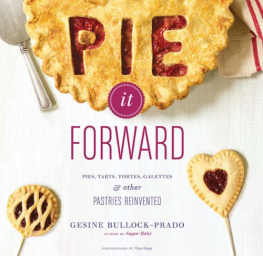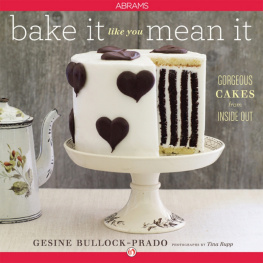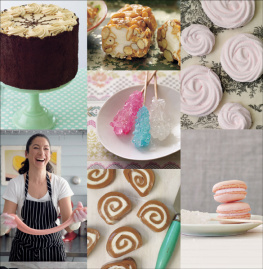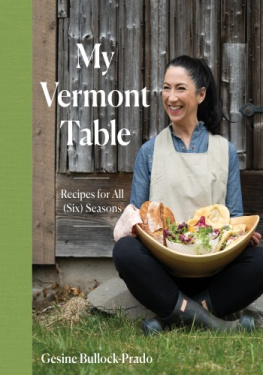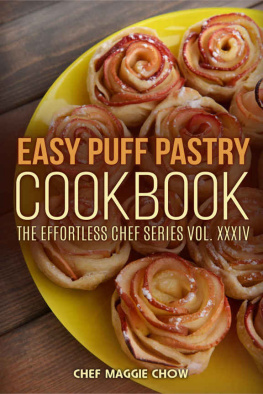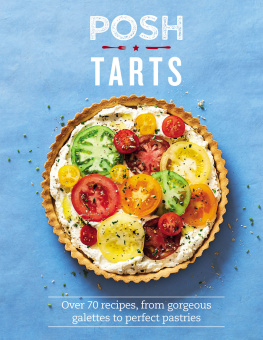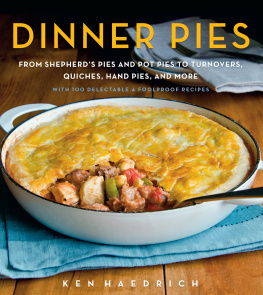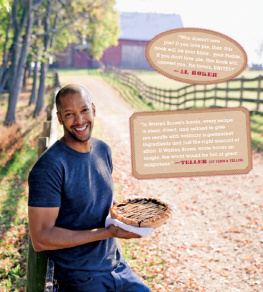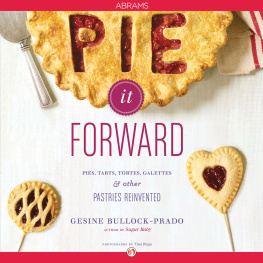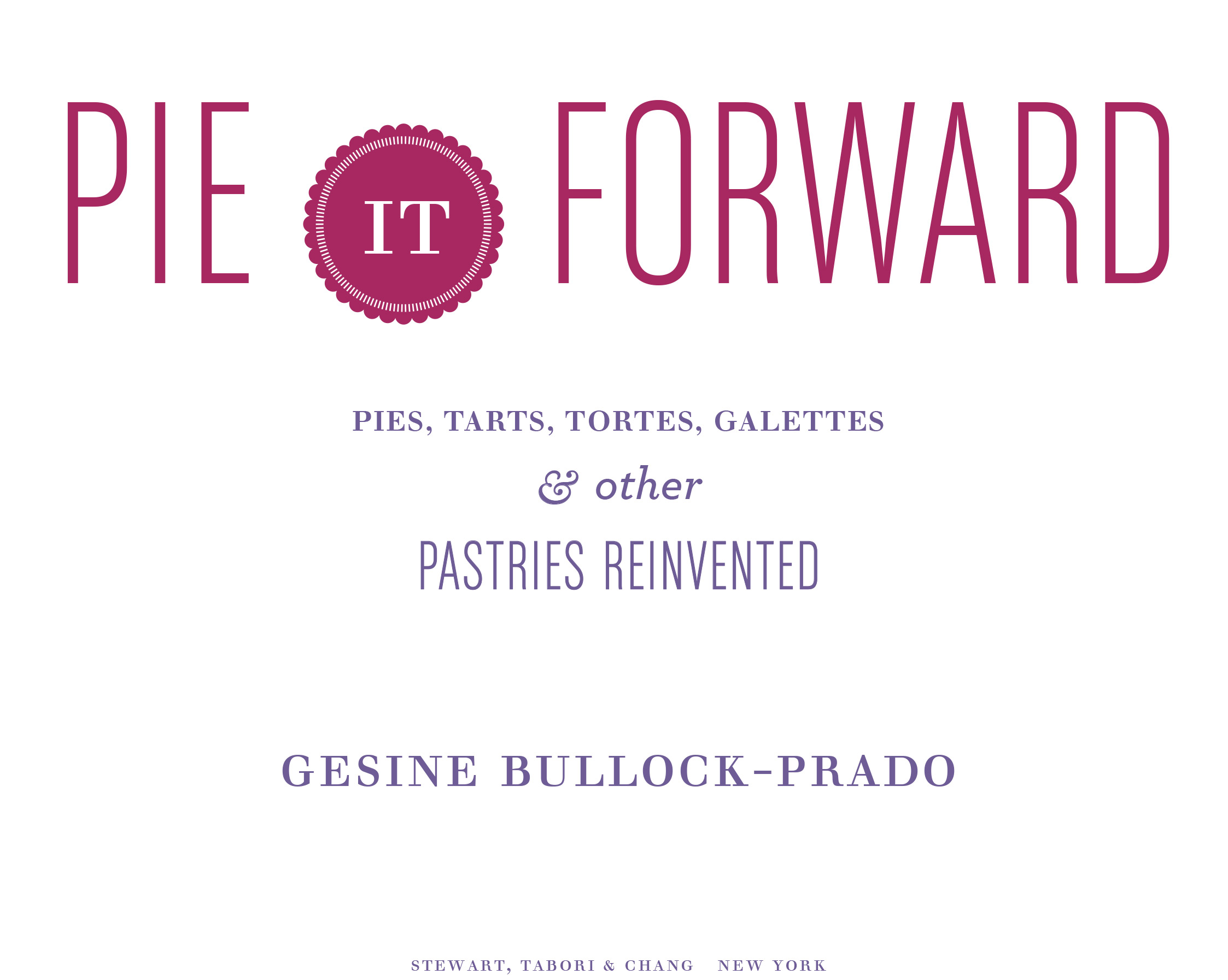Published in 2012 by Stewart, Tabori & Chang
An imprint of ABRAMS
Text copyright 2012 Gesine Bullock-Prado
Photographs copyright 2012 Tina Rupp
All rights reserved. No portion of this book may be reproduced, stored in a retrieval system, or transmitted in any form or by any means, mechanical, electronic, photocopying, recording, or otherwise, without written permission from the publisher.
Library of Congress Cataloging-in-Publication Data:
Bullock-Prado, Gesine.
Pie it forward : pies, tarts, tortes, galettes, and other pastries
reinvented / Gesine Bullock-Prado ; photography by Tina Rupp.
p. cm.
Includes index.
ISBN 978-1-4532-7689-1
1. Pies. 2. Pastry. I. Title.
TX773.B887 2012
641.86'52dc23
2011039855
Editor: Natalie Kaire
Designer: Alissa Faden
Production Manager: Tina Cameron
Prop Stylist: Deborah Williams
The text of this book was composed in Archer, Gotham, Walbaum, and Chalet.
Stewart, Tabori & Chang books are available at special discounts when purchased
in quantity for premiums and promotions as well as fundraising or educational use.
Special editions can also be created to specification. For details, contact
or the address below.
115 West 18th Street
New York, NY 10011
www.abramsbooks.com
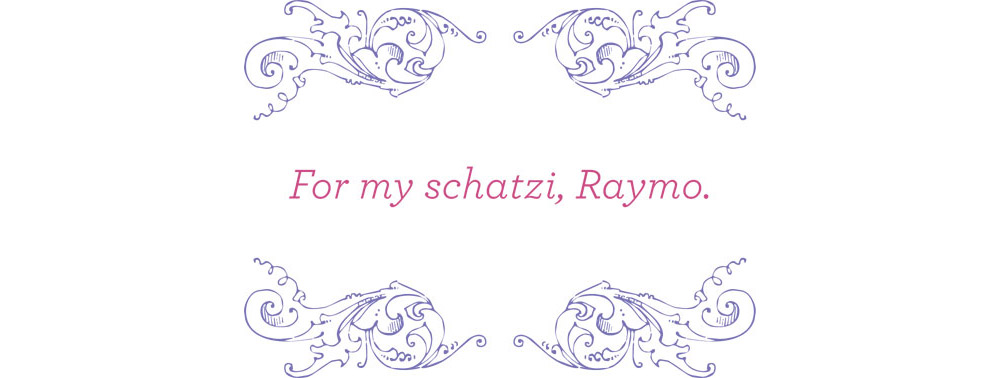
CONTENTS

You think you know pie: the double crusts, the lattices, the crumbles, and the pots. But what do you REALLY know about it? Can you honestly say that in your relationship with these flaky and tender-crusted vessels of deliciousness youve bothered to ask about pies past, its adventures in history, and its development from a thick-walled, inedibly crusted caloric delivery system to a coveted homespun delicacy? I thought not. As the resident pie expert and official member of the High Order of the Keepers of the Crust, I have orchestrated this introduction:
READER, MEET PIE. PIE, MEET READER.
READER: So how o ld ar e you, really?
PIE: Older t han mo st sparkly vampiresthousands of years old. On your next visit to Egypt, you may spot my image etched onto the walls of pyramids.
As a matter of fact, Pharaoh Ramses II, recognized as supreme leader AND a pie fan, was so besotted with the crusty stuff that his tomb bears images of galettes. The Greeks and Romans used pastry to encase savory fillings, making them more portable and giving sailors some culinary variety on long sea journeys. The first hit cookbook, written by Apicius, has any number of recipes devoted to pastry cases filled with a wondrous assortment of goodies, from honey-soaked almonds to minced meats. The most popular pie of the day (that day being around the start of the fifth century) had the unfortunate moniker of Placenta. Thankfully, it wasnt an afterbirth potpie, but an ancient variation on our beloved cheesecake. So remember next time youre eating a cheesecake, youre really eating the oldest known pie.
READER: How'd you get that catchy name?
PIE: Its been so many years I dont quite remember anymore, but some say I was named after the magpie, a bird that has an affinity for collecting bits of disparate pieces of junk, at which I take umbrage. Sure, early humble pies once consisted of anything remotely edible shoved into a thick-walled flour crust and baked until any vestige of taste was eradicated, so I can see how I could once have been equated with a clinically insane feathered hoarder, but weve come so far since then.
READER: Whats so easy about easy as pie?
PIE: Who are you calling easy? Im just not that kind of girl. Now, Cake, shes easy. Just put a bunch of ingredients in a bowl, and shes ready to do your bidding. I, on the other hand, take a little wooing. My crust needs attention, and my filling is an entirely separate undertaking from the delicious flaky vessel. What is easy about me is the eating. Back in the day, pies like delicious Cornish pasties were handheld affairs, small enough to carry in your pocket to the mines but hearty enough to nourish throughout the day. So while my preparation isnt necessarily easy, eating me can be.
READER: Is it true that crusts make the pie, and have crusts always been so darn tasty?
PIE: Yes and no. A pie just isnt a pie without the crust(s), this much is true. But dont get me started on what crusts used to be. First off, a crust very early on served as a vessel alone and wasnt exactly edible. It was thick walled, inches wide even, and was constructed from a flour-and-water paste not unlike Play-Doh... just not as tasty. Crusts had to be dense and damn hard to withstand hours, maybe days, of cooking. They needed to be sturdy because they were made for storage. Fittingly, those inedibly crusted pies with tops and bottoms were once called coffyns, while those with just a bottom crust were named traps. There were no pie dishes; the crust was the dish and probably tasted just as good as a hearty bite of Pyrex. Consider yourself lucky that some glorious baker thought to make the crust edible by adding a generous dose of fat.
READER: Four-and-twenty blackbirds? Singing? Really?
PIE: Think what you may, but yes, Ive been known to house live songbirds in my day. Whats more, minstrels used to hide in me and pop out to sing a ditty or two between the MANY courses of Henry Tudors dinner parties. A naked lady jumping out of a cake is quaintly 1950s. Jumping out of a pie, however, is old-school 1480s.
When the birds werent living, they were still displayed in all their whole, feathered glory; the carcass that had once encased the yummy contents of a pie would be draped over the pastry to identify and adorn it. King Henry VIs coronation was celebrated with peacock pie, and the English went on making these bird pies until Victorian times. They couldnt stop themselves from shoving all manner of songbirds into a piecrust (even when it was illegal to fell the sweet warblers). Thankfully, the tradition of dead bird on pie was eventually forsaken and, instead, porcelain birds were settled into the pie and allowed to peek out, creating both a form of pie identification and a vent for steam.
READER: Is apple pie really all that American?
PIE: Yes, of course. Berry pies, probably even more so. And dont get me started on pumpkin. Pies in the Old Country were most often savory. In the New World, industrious cooks plucked and picked what was immediately available and, like the good locavores they were, filled their pies with what was nearby, like indigenous berries and tree fruits. Thrifty Pilgrims used shallow pans lined with pastry as a vessel for baking local berries and a baking tradition took hold in the Americas, giving rise to a pantheon of splendid American beauties like apple pie, pecan pie, sour cherry pie, and the nonpie pies like Boston cream pie (likely named because locals used a pie plate to bake the cake layers).
And since provisions like flour were scarce, they had to cut cornersthey literally made the pies round. Thats where the phrase comes from! True story!

